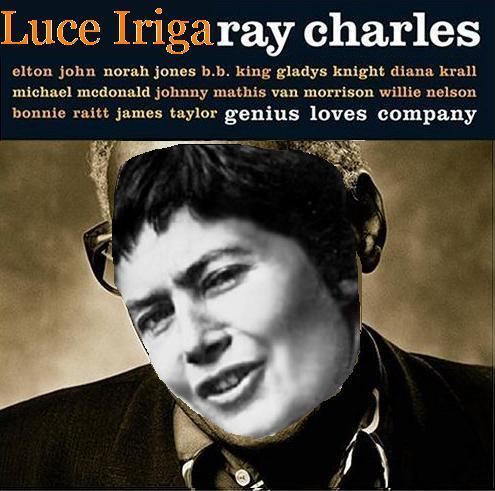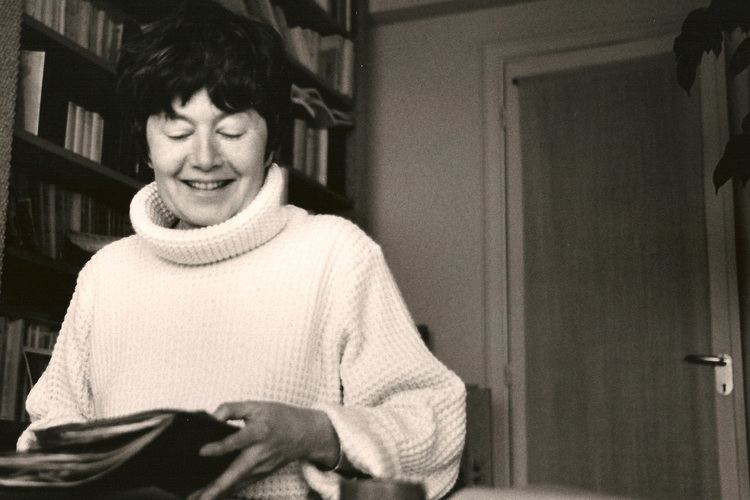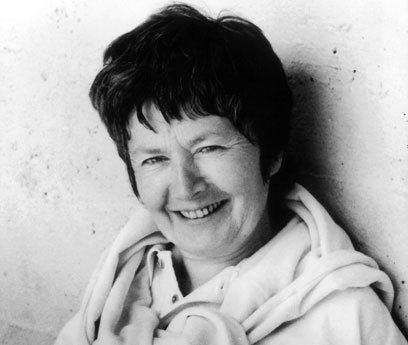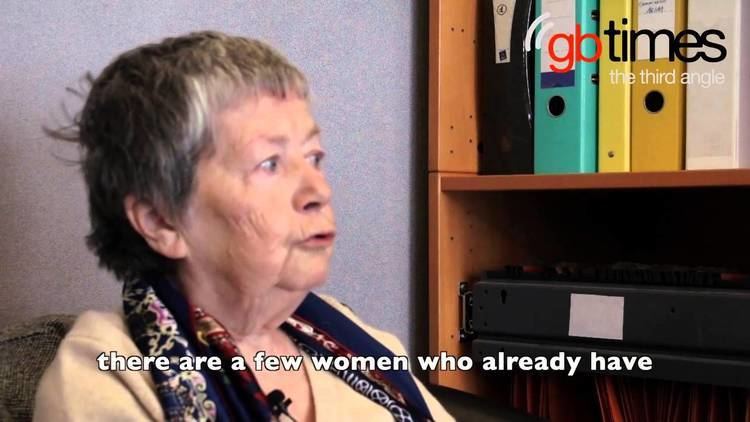Nationality French Role Philosopher Influenced Catherine Malabou | Name Luce Irigaray | |
 | ||
Education Catholic University of Leuven Influenced by Jacques Lacan, Sigmund Freud, Jacques Derrida, Martin Heidegger, Emmanuel Levinas, Maurice Merleau-Ponty Books This sex which is not one, Speculum of the other woman, Ethics of Sexual Difference, Elemental Passions, In the Beginning - She Was Similar People Julia Kristeva, Jacques Derrida, Jacques Lacan, Judith Butler, Sigmund Freud | ||
Notable ideas "Women on the market" | ||
LUCE IRIGARAY BY ISABELLE HAMLEY
Luce Irigaray ([iʁigaʁɛ]; born 3 May 1930) is a Belgian-born French feminist, philosopher, linguist, psycholinguist, psychoanalyst and cultural theorist. She is best known for her works Speculum of the Other Woman (1974) and This Sex Which Is Not One (1977).
Contents
- LUCE IRIGARAY BY ISABELLE HAMLEY
- Luce Irigaray Comment Habiter Durablement Ensemble
- Education
- Works and publications
- Themes
- Criticism
- References

Luce Irigaray - Comment Habiter Durablement Ensemble?
Education

Luce Irigaray received a bachelor's degree from the University of Louvain in 1954 and a master's degree from the same university in 1956 and taught at a high school in Brussels from 1956 to 1959.

In 1960 she moved to Paris to pursue a master's degree in Psychology from the University of Paris, which she earned in 1961, she also received a Diploma in Psychopathology from the school in 1962.

In the 1960s, Irigaray started attending the psychoanalytic seminars of Jacques Lacan and joined the École Freudienne de Paris, directed by Lacan.
She later gained a PhD in Linguistics, and eventually a second PhD in Philosophy featured a critique of Freud's position on femininity.
She held a research post at the Centre national de la recherche scientifique since 1964, where she is now a Director of Research in Philosophy.
Her initial research focused on dementia patients, about whom she produced a study of the differences between the language of male and female patients.
Noted also is that in her writings, Irigaray has stated a concern that an interest in her biography would affect the interpretation of her ideas as the entrance of women into intellectual discussions has often also included the challenging of women's point of view based on biographical material. Her most extensive autobiographical statements thus far are gathered in Through Vegetal Being (co-authored with Michael Marder).
Works and publications
Her first major book Speculum of the Other Woman published in 1974, caused significant controversy within the Lacanian school in France and led to her losing a university appointment at the prompting of Lacan himself.
In 1977 Irigaray published This Sex Which is Not One which was subsequently translated into English with that title and published in 1985, along with Speculum. In addition to more commentary on psychoanalysis, including discussions of Lacan's work, This Sex Which is Not One also comments on political economy, drawing on structuralist writers such as Lévi-Strauss. For example, Irigaray argues that the phallic economy places women alongside signs and currency, since all forms of exchange are conducted exclusively between men. (See the essay "Women on the Market", which is Chapter Eight of This Sex Which Is Not One.)
Irigaray draws upon Karl Marx’s theory of capital and commodities to claim that women are exchanged between men in the same way as any other commodity is. She argues that our entire society is predicated on this exchange of women. Her exchange value is determined by society, while her use value is her natural qualities. Thus, a woman’s self is divided between her use and exchange values, and she is only desired for the exchange value. This system creates three types of women: the mother, who is all use value; the virgin, who is all exchange value; and the prostitute, who embodies both use and exchange value.
Within the same essay, “Women on the Market,” Irigaray uses additional Marxist foundations to argue that women are in demand due to their perceived shortage and as a result, males seek “to have them all," or seek a surplus like the excess of commodity buying power, capital, that capitalists seek constantly.
Irigaray speculates thus that perhaps, “the way women are used matter less than their number." In this further analogy of women “on the market,” understood through Marxist terms, Irigaray points out that women, like commodities, are moved between men based on their exchange value rather than just their use value, and the desire will always be surplus – making women almost seem like capital, in this case, to be accumulated. “As commodities, women are thus two things at once: utilitarian objects and bearers of value."
Themes
Some of Irigaray's books are imaginary dialogues with significant contributors to Western philosophy, such as Nietzsche and Heidegger. However Irigaray also writes a significant body of work on Hegel, Descartes, Plato, Aristotle and Levinas, as well as Merleau-Ponty. She continued to conduct empirical studies about language in a variety of settings, researching the differences between the way men and women speak. This focus on sexual difference is the key characteristic of Irigaray's oeuvre, since she is seeking to provide a site from which a feminine language can eventuate.
Criticism
Many feminists seek to criticize the perceived essentialist positions of Luce Irigaray. However, there is much debate among scholars as to whether or not Irigaray's theory of sexual difference is, indeed, an essentialist one. The perception that Luce Irigaray's work is essentialist concentrates on her attention to sexual difference, taking this to constitute a rehearsal of heteronormative sexuality. As Helen Fielding states, the uneasiness among feminists about Irigaray’s discussion of masculinity and femininity does not so much reveal Irigaray’s heteronormative bias, but "arises out of an inherited cultural understanding [on the part of her critics] that posits nature as either unchanging organism or as matter that can be ordered, manipulated and inscribed upon. Hence the concern over essentialism is itself grounded in the binary thinking that preserves a hierarchy of...culture over nature."
W. A. Borody has criticised Luce Irigaray's phallogocentric argument as misrepresenting the history of philosophies of "indeterminateness" in the West. Luce Irigaray's "black and white" claims that the masculine=determinateness and that the feminine=indeterminateness contain a degree of cultural and historical validity, but not when it is deployed to self-replicate a similar form of the gender-othering it originally sought to overcome.
Alan Sokal and Jean Bricmont, in their book critiquing postmodern thought (Fashionable Nonsense, 1997), criticize Luce Irigaray on several grounds. They say she regards E=mc2 as a "sexed equation" because of their interpretation of her response to a question on the subject, for instance when she says "Perhaps it is. Let us make the hypothesis that it is insofar as it privileges the speed of light over other speeds that are vitally necessary to us". They also take issue with the assertion that fluid mechanics is unfairly neglected because it deals with "feminine" fluids in contrast to "masculine" rigid mechanics. In a review of Sokal and Bricmont's book, Richard Dawkins wrote that, "You don't have to be a physicist to smell out the daffy absurdity of this kind of argument (...), but it helps to have Sokal and Bricmont on hand to tell us the real reason why turbulent flow is a hard problem (the Navier–Stokes equations are difficult to solve)."
